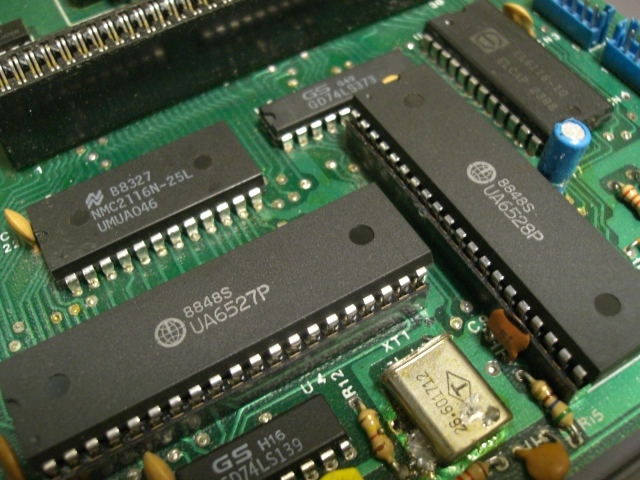Dendy was a hardware clone of the Nintendo Famicom. It was released in early 1990s by Steepler company.
Hardware were assembled in Taiwan.
Since no officially licensed version of the NES was ever released in ex-USSR,
the Dendy was easily the most popular video game console of its time in that setting,
and enjoyed a degree of fame roughly equivalent to that experienced by the NES/Famicom in North America and Japan.
We learnt definitely that in the first models of Dendy as well as in many Asian famiclones they used
CPU “6527P” and
PPU “6538”.
These chips most probably were clones of the original Ricoh-chips and were manufactured by:
UMC (United Microelectronics Corp.):
UA6527P, UA6538Hitachi(?):
HA6527P, HA6538 Toshiba(?):
TA6527P (aka TA-03NP1),
TA6538 (aka TA-02NP)
Hardware galleryAfter 1993 there appeared “Dendy-on-1-chip” based on
UMC UM6561Their matching with games were worse than the original ones based on
6527P/6538.
-some stuff-my dendy-steepler
galleryHardWareMan's hi-quality audiorecords from TA6527P-chip (U,J-games, NTSC pitch / PAL speed):
Dendy-TA6527P-Samples (stereo, audiochannels are separated)
So, "Dendy" is very qualitative famiclone oriented to good compatibility with NTSC-Famicom cartridges.
Perhaps, somebody from the guru will become interested in the "6527P/6538"-based famiclones.
We need to know exact dendy timings for improvement Nestopia dendy-mode. We would be glad to your help.
Quote:
...except for things like (IIRC) Balloon Fight...
Balloon Fight (U,J) works correctly on Dendy.
Battletoads/BTDD (U,J) works with small glitches on title screen. PAL NES has *real* glitches with NTSC Battletoads/BtDD.











